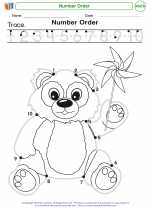An isosceles triangle is a type of triangle that has two sides of equal length. This means that two of its three sides are the same length, and the angles opposite those sides are also equal. The third side, called the base, may be a different length. The equal sides and angles give the isosceles triangle some unique properties.In an isosceles triangle, the angles opposite the equal sides are also equal. These angles are called the base angles. The angle opposite the unequal side is called the vertex angle. The sum of the angles in any triangle is always 180 degrees. Therefore, in an isosceles triangle, the two base angles are equal to each other and the vertex angle is different.The perpendicular bisector of the base of an isosceles triangle will also be its axis of symmetry. This means that if you were to fold the triangle in half along this line, the two halves would perfectly overlap.Isosceles triangles are commonly encountered in geometry and can be found in various shapes and structures. Understanding their properties and characteristics is important in many mathematical and practical applications..


